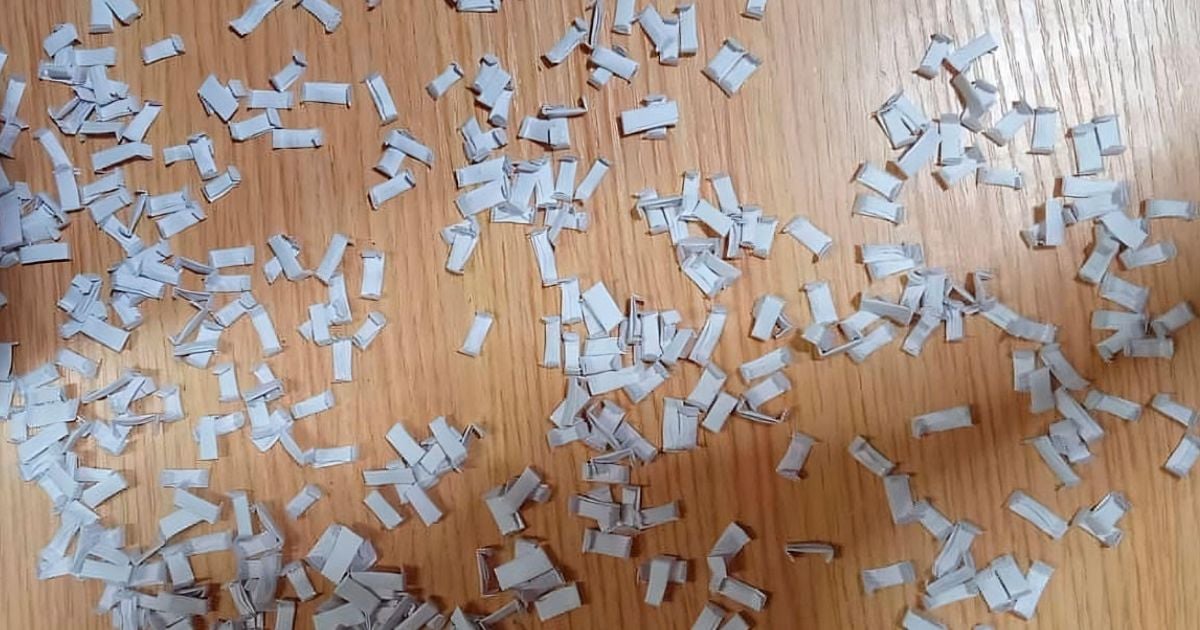The Cuban regime has officially acknowledged the presence and widespread circulation of a significantly more lethal version of the "chemical," a synthetic drug distributed on sprayed paper. Experts from the Ministry of the Interior (Minint) have confirmed that this drug contains highly dangerous substances such as fentanyl, formaldehyde, animal anesthetics, benzodiazepines, and phenobarbital. This acknowledgment marks a shift from the regime's previous downplaying of the issue, as reported by the state-run Cubadebate.
Contrary to past portrayals as an isolated or controlled problem, authorities now admit to witnessing hospitalizations due to overdose, increased drug-related criminal cases, and a rising pattern of consumption among young Cubans. Captain Leidy Laura Aragón Hernández, a specialist in Toxicology at the Provincial Criminalistics Laboratory, explained to state media that this new version of the "chemical" is produced in clandestine labs abroad and smuggled into Cuba disguised in paper, jewelry bags, or among aromatic plants like oregano, complicating its detection.
The Devastating Effects of "Chemical" Drug
Each batch of the drug can vary significantly from the last, heightening the risk of fatal poisonings. "The chemical has devastating effects, being 50 to 100 times more potent than THC from marijuana. A single dose can cause severe tachycardia, acute hypertension, and psychotic crises. In some instances, users have experienced extreme disinhibition, even stripping naked in public without realizing it," stated the expert.
The harrowing accounts from victims and their families starkly illustrate the impact of this drug on Cuban society. Ismael, 21, shared how his curiosity led him to try the drug on the street corner, only to spiral into addiction: "I sold everything I had. I felt good at first, but then it was just despair. I thought I was going to die."
Personal Stories Highlight the Crisis
For Javier, 24, the "chemical" led to a year of isolation, violence, and ruin: "It left me without money, dignity, or family. I cried on the floor, unable to stop. My wife begged me to quit, but I had lost control," he confessed. Now, after months of sobriety, his message is clear: "The chemical is no game. It's a bomb that destroys families, health, and dreams. Don't even try it."
Minint operations reveal that the "chemical" is no longer a fringe issue but a widespread threat affecting all social sectors, one that the regime has failed to contain. In Sancti Spíritus, one of Cuba's oldest provinces, undercover agents arrested a young woman from Havana in May 2024, transporting over 400 doses of the substance.
Law Enforcement's Struggle
The drug, soaked in oregano, was intended for distribution among local youth, and a young man from the province responsible for its sale was also apprehended. Lieutenant Colonel Iván Ruiz Mata, the provincial head of the anti-narcotics unit, noted that the drug primarily comes from the capital and its low cost, between 200 and 300 pesos per dose, makes it accessible to many teenagers.
"Spiritians used to avoid hard drugs, but this has changed. Today, 90% of those who try the chemical are hooked after the first dose," he asserted. Chief Prosecutor of Criminal Proceedings, Yoan Leonel Pereira Bernal, reported that in the first quarter of 2025, five drug-related criminal cases were opened, compared to just one in the same period the previous year, another alarming sign.
Legal Consequences and Social Impact
Sentences range from four to thirty years in prison, depending on the role and severity of the crime. "Those who transport, introduce, manufacture, or sell drugs face severe penalties. There's a clear aggravating factor when minors are involved in the process, adding charges of corruption of minors," explained the prosecutor.
He also warned about the "shared consumption" phenomenon, where an addict acquires the drug and distributes it among friends, which is considered drug trafficking. Kenia's story, a 23-year-old sentenced to seven years for drug trafficking, highlights this reality. She was arrested while attempting to distribute paper laced with the chemical.
"I was misled by the wrong friends. I thought nothing would happen. Now I'm in prison, my parents fell ill, and my life is on hold," she recounts from her cell.
Facing pressure from the growing drug use and social concern, the regime has started implementing preventive measures in private bars, nightclubs, and educational institutions. Andrei Armas Bravo, Director of Education in Sancti Spíritus, acknowledged that while no trafficking cases have been detected within schools, there are students involved in consumption outside the classroom.
"We need to work with families. Prevention begins at home. We know where the main hotspots are and are strengthening preventive efforts there, especially in secondary and pre-university education," the official explained.
Beyond operations, controls, or school campaigns, the issue requires deep examination: the chemical is already in Cuba, claiming lives, mental health, and future projects amid institutional collapse and the absence of effective public health and rehabilitation policies. The regime's admission of the chemical's true composition and reach is a warning signal. This is no longer a foreign or anecdotal phenomenon—it's a national crisis taking root in neighborhoods, recreational centers, and Cuban homes, under the increasingly weary eyes of society.
Key Questions About the "Chemical" Drug Crisis in Cuba
What substances are included in the new version of the "chemical" drug?
The new version of the "chemical" drug includes substances such as fentanyl, formaldehyde, animal anesthetics, benzodiazepines, and phenobarbital.
How is the drug being smuggled into Cuba?
The drug is smuggled into Cuba disguised in paper, jewelry bags, or among aromatic plants like oregano, making detection difficult.
What are the legal consequences for drug-related crimes in Cuba?
Sentences for drug-related crimes in Cuba range from four to thirty years, depending on the role and severity of the crime, with harsher penalties if minors are involved.
How has the Cuban regime responded to the drug crisis?
The Cuban regime has begun implementing preventive measures in bars, nightclubs, and educational institutions, but the crisis continues to escalate amid institutional failures.
